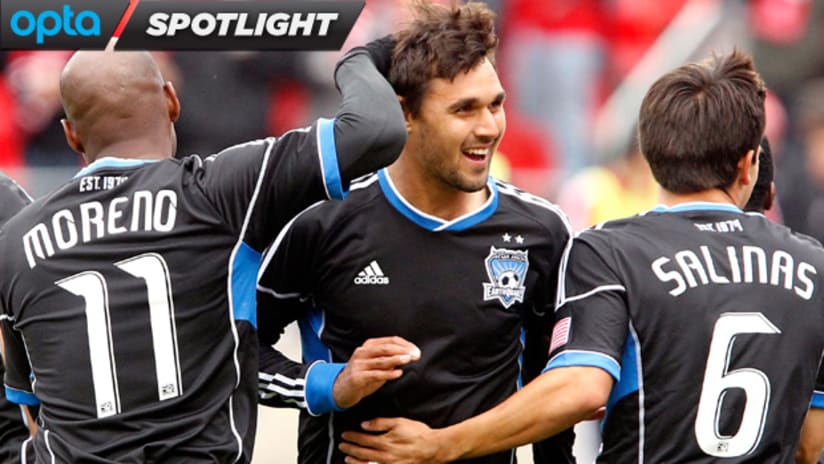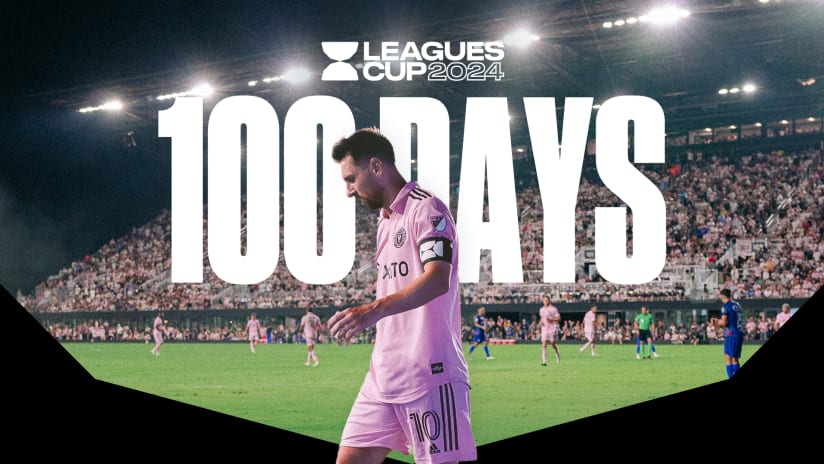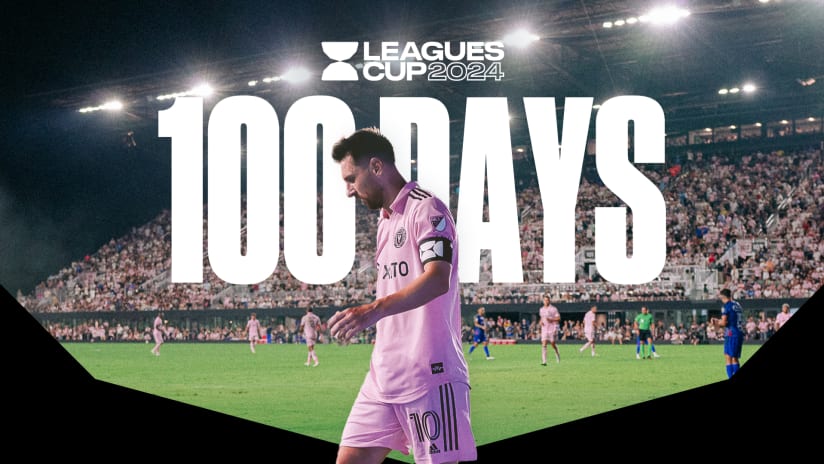Each week, MLSsoccer.com and OPTA will highlight one aspect or trend from that weekend’s action using analytics and events during the match to explain what forces are at play and how they pertain to the big picture.
The Brian Ching saga may have occupied the most column inches, but the most influential trades of the MLS offseason – through eight weeks, at least – likely involved a diminutive Honduran and two-time Expansion Draft pick that ended up in the Bay Area.
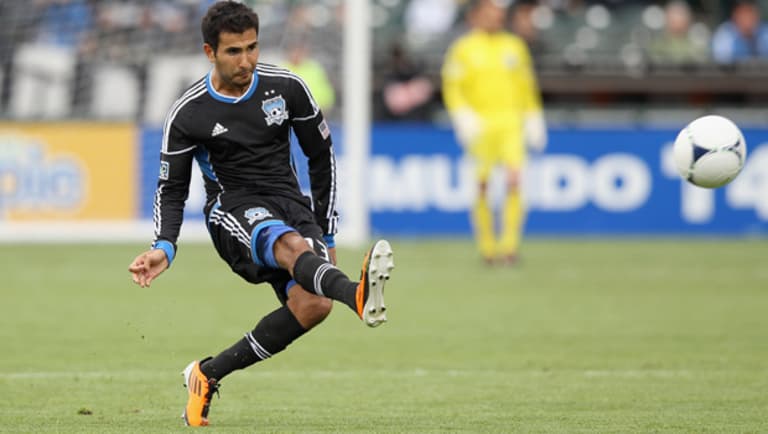
Stocked with forwards who felt most comfortable in and around the six-yard box and over reliant on right back Steven Beitashour (right) for service, Earthquakes coach Frank Yallop dished out the allocation money necessary to fill the corresponding void, making moves that have turned out even better than most in San Jose could have imagined.
During a 17-day span in November and December, Marvin Chávez and Shea Salinas arrived in San Jose from Dallas and Vancouver, respectively. Two months into the regular season, San Jose’s trio of assist men – along with the return of Steven Lenhart and smoldering form of Chris Wondolowski – have fueled the rise of what has become the league’s hottest team, apologies Sporting KC.
WATCH: San Jose vs. D.C. United, Wednesday – 10:30 pm ET, MLS LIVE
| Year | Total Crosses/Corners | Crosses/gm | Successful Crosses/Corners | SC/gm |
| 2011 | 643 | 18.91 | 162 | 4.76 |
| 2012 | 185 | 23.12 | 42 | 5.25 |
From an analytical standpoint, Beitashour, Chávez and Salinas’ (currently injured) contribution to the Quakes revival is fairly straightforward: They provide the majority wide service that drives San Jose’s attack, something that was often lacking last season. Compared to 2011, crosses and corner kicks are up by more than four per game (see table at right) and those chances are being finished far more regularly.
And with Lenhart back in the fold, giving San Jose’s wide players a beacon apart from Wondolowski to aim for in the penalty box, the Quakes are simply feasting on airborne service in 2012. They lead the league in headed goals (eight of their 15 strikes), headed conversion rate (40 percent) and trail only the Red Bulls in goals scored.
WATCH: Lenhart and Chávez combine for opener against Union
| Team | Headed goals | Headed shots | Headed shots on target | Conversion Rate |
| SJ | 8 | 20 | 10 | 40% |
| SKC | 5 | 26 | 10 | 19.2% |
| DC | 4 | 12 | 6 | 33.3% |
| CHV | 3 | 18 | 6 | 16.7% |
| TOR | 2 | 22 | 9 | 9.1% |
As that proclivity to finish with the head and the chart below, which outlines where assists originated from as well as shot location, suggests, San Jose are finding their attacking success thus far via service from wide areas into the territory surrounding the six-yard box.
The majority of that service is coming from Beitashour, Chávez and Salinas, who have attempted as many crosses (107 of the Quakes' total of 185) combined as four teams in MLS. All told, the trio have assisted on nine of the team’s 15 goals, feeding the goal-hungry Wondolowski and linking up with Lenhart, Alan Gordon and others as well.
Boiled down to basics, Yallop's theory appears to be cross it and the goals will come. And thus far, sticking to that strategy is looking like a wise move for a side (6-1-1) that's just two points behind nearly perfect Sporting KC.
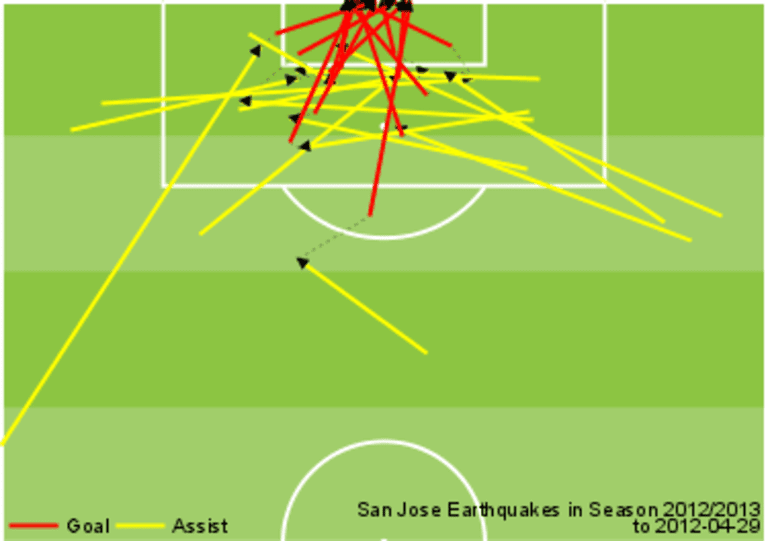
As a team, San Jose are second in MLS in total crosses and third in successful crosses, a marked contrast to 2011 when, the club ranked in the bottom half of the league in crosses (successful and overall), one of the reasons the Quakes were the fourth-most anemic attack in MLS (40 goals scored). Of course, as Toronto's presence as the most prolific crossing team in the league shows, simply peppering the area with service is only part of the equation.
Unlike TFC, San Jose are finishing the chances they create and one glance at the Opta Chalkboard crossing chart (see below, unsuccessful crosses on the left and successful on the right) from San Jose’s April 21 victory against Real Salt Lake – a 3-1 triumph in a game between the Western Conference’s top side – shows you why opposing defenses are allowing nearly two goals a game and exactly one headed goal per game to San Jose. Faced with a deluge of balls into the box, chinks in a backline’s armor are bound to be exposed over time.
WATCH: San Jose exploits wide areas against shorthanded RSL
| Team | Total Crosses/Corner Kicks | Successful Crosses/Corner Kicks | % Successful |
| TOR | 197 | 39 | 19.8% |
| SJ | 185 | 42 | 22.7% |
| CHV | 182 | 42 | 23.1% |
| SKC | 180 | 54 | 30% |
| RSL | 173 | 28 | 16.2% |
Real Salt Lake, which it must be said were down two players for much of the game, only allowed nine successful crosses out of 41 total, but San Jose’s efficiency in front of net – in this case headers by Khari Stephenson, Simon Dawkins and Wondolowski – made the difference.
And although the numbers are clearly skewed by the space opened up by Fabián Espíndola and Jámison Olave's ejections, San Jose remained steadfast when presented with an opportunity to exploit RSL in their preferred manner. Predictably, they were more than happy to keep the ball wide – up a man or not – and force RSL's defenders to deal with their aerial prowess.
Jason Kreis' bunch held on for the better part of 90 minutes, but couldn't keep San Jose's size in the box and crossing ability from unlocking their backline. As the first eight games of 2012 have shown, there aren't many MLS sides that could.


